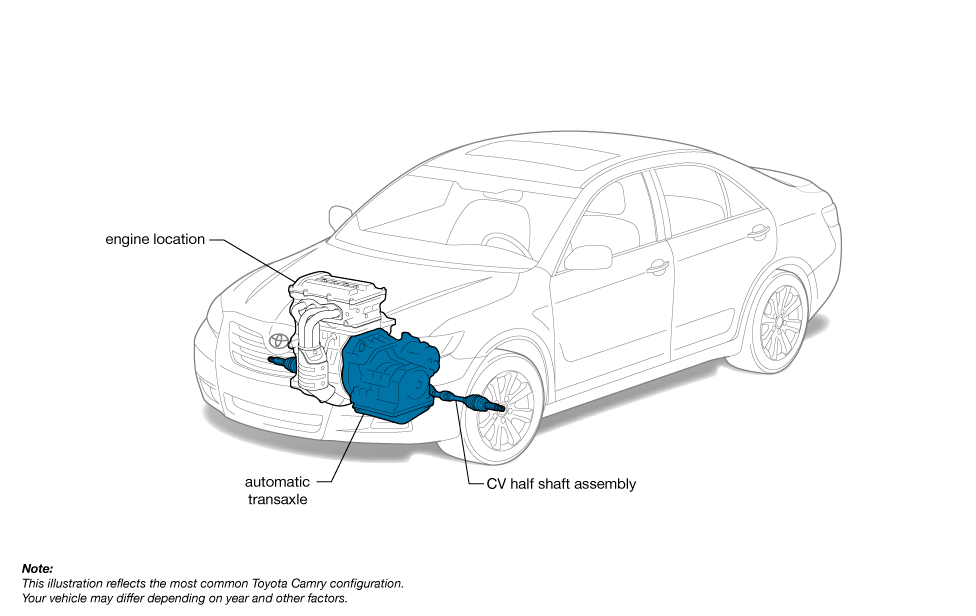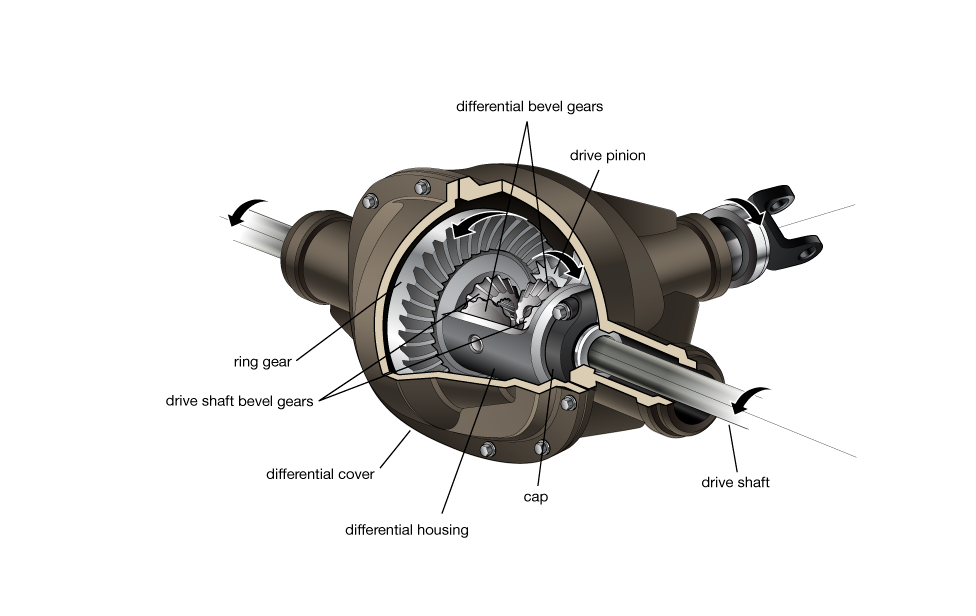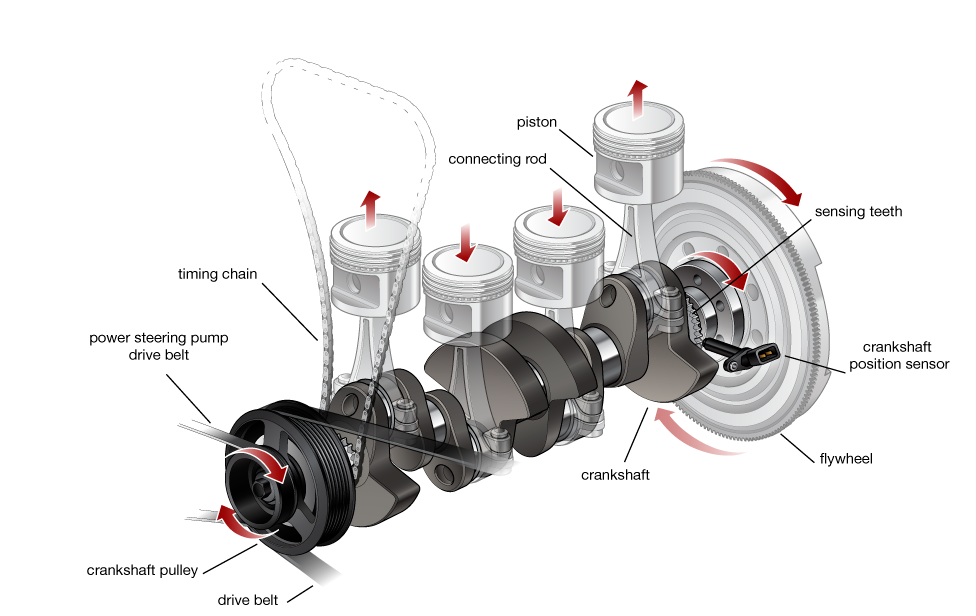
Drivetrain
A vehicle’s drivetrain includes all the components that make it move, from the engine to the wheels.
The intermediate elements are the transmission, driveshaft(s) and drive axles.
The parts between the transmission and wheels, which can comprise either two- or four-wheel-drive components, are known as the driveline.
The main function of the drivetrain is basically to convey power from the vehicle’s engine, through the transmission to the drive wheels on the vehicle to control the amount of torque. “Torque” is turning or twisting force.
Drivetrain (Part 2)
A driveshaft is a long tube of steel that is linked to a car’s transmission at one end and the wheels at the other. It transfers the mechanical power from the transmission to the other components of the vehicle.
A U-joint, or universal joint, is a flexible pivot point that transmits power allowing for varying angles of the driveshaft.
CV joints, or constant-velocity joints, are part of the driveshaft. These joints are designed to be able to bend in any direction while continuing to turn the drive wheels at a constant velocity.
The differential is where the power makes its last stop before spinning the wheels.
Axle shafts are a single rotating shaft, on either side of the differential, which delivers power from the final drive assembly to the drive wheels.
Differential
The differential is a system of gears that allows different drive wheels (the wheels to which power is delivered from the engine) on the same axle to rotate at different speeds, such as when the car is turning.
A differential is also the component through which a rotating driveshaft can change direction; for example, in a rear-wheel-drive car whose driveshaft runs the length of the car, it joins and transfers its power to an axle that runs perpendicular to the car to drive the left and right wheels.
Differentials are low-maintenance, sealed components that are expected to last the life of the vehicle but may have a recommended service interval to check and/or replace the oil.
Note that a car with four-wheel drive can have two or more differentials.
A failing differential can cause vibration, binding during turns and/or sounds ranging from clunking to howling.
Differential (Part 2)
The differential compensates for different wheel speeds of driven axles.
Different wheel speeds occur when cornering because one wheel of an axle travels a longer path than the other. In the process, the outside wheel rotates faster than the one on the inside of the bend.
Speed compensation of the driven axles in most cases is taken care of by a bevel gear differential.
A limited-slip differential directs power to the wheel with the better traction and prevents the other wheel from spinning freely.
The differential is found on all modern cars and trucks, and also in many all-wheel-drive (full-time four-wheel-drive) vehicles.
These all-wheel-drive vehicles need a differential between each set of drive wheels, and they need one between the front and the back wheels as well, because the front wheels travel a different distance through a turn than the rear wheels.
Crankshaft
The crankshaft is a hardened-steel shaft running the length of the engine that converts the linear force of the moving pistons into rotational force.
To use the bicycle analogy, the cyclist’s legs are the pistons, and the pedals and crank are the crankshaft.
A failure in the crankshaft or piston connecting rods typically produces loud knocking or banging sounds from the engine and represents expensive repairs in the form of an engine rebuild or replacement.
It is typically connected to a flywheel to reduce the pulsation characteristic of the four-stroke cycle, and sometimes a torsional or vibrational damper at the opposite end, to reduce the torsional vibrations.
The crankshaft, sometimes casually called the crank, is the part of an engine which changes the up and down motion of the pistons into rotation.
To convert the motion, the crankshaft has one or more offset shafts. The pistons are connected to the crankshaft by these shafts.
When the piston moves up and down, it pushes the offset shaft. This in turn rotates the crankshaft. The pistons cause a pulsing affect in the rotation.
